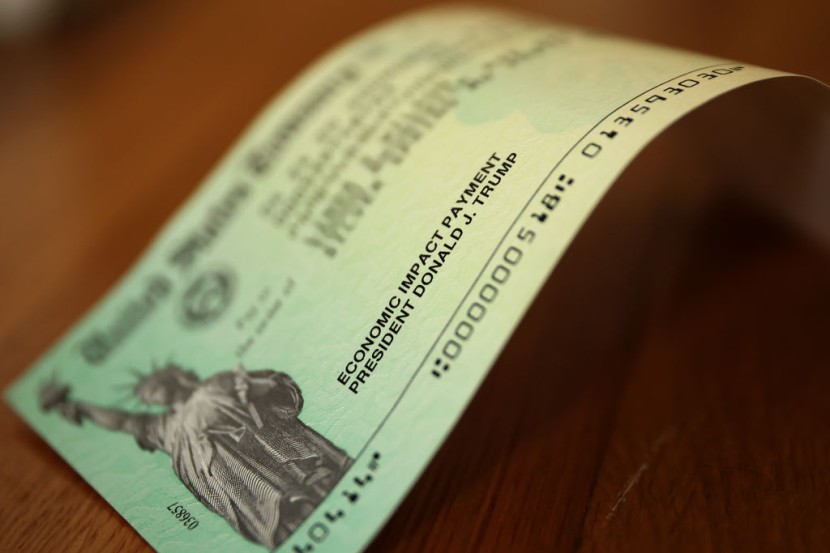
Parents have until August 2 to opt out of the next monthly child tax credit payment, deposited on August 13 in qualifying accounts. The increased child tax credit was automatically registered in the majority of eligible parents in 2021.
The new maximum child tax credit was increased from $2,000 to $3,600 for each kid under the age of six and $3,000 for all others under eighteen, among other significant changes. Half of the credit is given out in advance, in the form of monthly payments of up to $250-$300 per child, as mandated by Congress.
The first of six payments were deposited into parents' bank accounts on July 15, and the next transfer is a little over two weeks away - giving parents plenty of opportunity to opt-out if they choose. Passing on what is effectively "free" money from the government may seem counterintuitive.
However, if your income is primarily derived from tips that aren't reported until tax season or if your income is near the qualifying limit and you're concerned about receiving a surprise tax bill next spring, opting out may be the best option.
How can I opt-out of the Child Tax Credit?
Per AS.com, the IRS will monitor the Child Tax Credit distribution process like what it did with the three rounds of stimulus checks. The tax authorities have launched two new online portals to allow parents to manage their payments and simplify the massive national effort.
The Child Tax Credit was previously offered in a lump sum when they filed their taxes, and this option is still accessible under the new system. Parents can opt-out of the monthly payments using the Child Tax Credit Update Portal.
Simply login to the portal using your IRS username or ID.me account and select Manage Advance Payments from the menu. You'll be able to opt-out of the monthly payments from there.
Keep in mind that opting out has several deadlines before the next round of payments is delivered. If you do not wish to receive the payment in mid-August, you must discontinue the monthly payments by August 2.
By opting out of the monthly payments, you will avoid having to repay a portion of the monthly payments if your family income rises after your next tax filing. The Child Tax Credit is based on your tax filing from the previous year, but if your earnings are more remarkable than projected, you may no longer be eligible; and the IRS may ask you to repay the money.
Schedule of the next child tax credit payment
This year, you won't get the total amount of the child tax credit. Unless you notify the IRS you wish to unenroll from the advance monthly payments and obtain a lump sum next year, you'll get half of the money in monthly installments and the rest when you file your taxes in 2022. The following payment will be made on August 13.
In other words, your maximum stimulus payment - up to $1,800 per child - will occur next year. Until then, you'll get six smaller installments over the year, which you may begin spending right immediately. The goal is to provide you money sooner so you can pay for things like rent, food, and child care. That's why the stimulus checks are labeled "advance payments," as per CNET.
It's unclear how the child tax credit payments would be split between 2021 and 2022. This year, up to $1,800 (half of the amount) will be paid out in six $300 monthly installments to each qualified kid aged five and under. This year, up to $1,500 will be distributed to each child between the ages of 6-17 in six $250 monthly stimulus payments.
Their age determines your child's eligibility on December 31, 2021; thus, a 5-year-old turning 6 in 2021 will be eligible for a maximum of $250 a month. The remaining amount will be included in your 2021 tax refund when you claim the remainder of the credit in 2022 for both age groups.
If you have an 18-year-old child, they may be eligible for $500 each. Dependents aged 19 to 24 may also be eligible, but they must be enrolled full-time in college.
Millions of kids might miss the Child Tax Credit payments
According to a report released Thursday by the Center for Budget and Policy Priorities, about four million children in low-income households are at risk of missing out on a monthly stimulus payment of the increased child tax credit this year. The extended and reformed tax relief has the main objective of reaching the poorest households.
It was formerly only accessible to parents in a flat amount during tax season; those with little or no wages may have only received a partial payment or none at all. According to the Center, the improvements will result in a 40% drop in children living in poverty-stricken homes.
The report showed parents who haven't filed a recent tax return or updated vital information with the IRS might be eligible for the benefit this year. These Americans are frequently the poorest and have the most to benefit from the funds.
The report's estimate of four million children is based on Treasury Department statistics and Medicaid, a public health program for low-income families and others. According to experts, determining how many children fall through the gaps is challenging, CNBC reported.
Related Article: Child Tax Credit: Here's How to Increase Your Next Stimulus Payments If You Get Less Money Than You Expect








